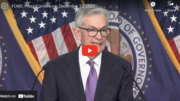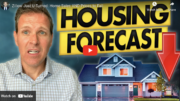There is a strong relationship between the Fed’s quantitative easing (QE) policies, valuations in the stock market, inflation and politics. If you don’t see the holistic picture here, you will miss out on some great investing opportunities at best, and at worst, you may underestimate the negative long term impact of QE policies.
Ben Bernanke’s Great Fear
The Chairman of the Federal Reserve, Ben Bernanke, is an economic historian by trade. More specifically, he is a scholar that has specialized in studying the Great Depression. I believe this is what made him right for the job during the financial crisis of 2008, but it is also what colors his current policies. What was an asset during a time of crisis may come back to bite us in the long term.
Ben Bernanke really fears a deflationary spiral. This is what happened during the Great Depression and why it took so long to get us out of it. Prices went down, which means companies lost margin, which cause them to cut costs, which caused them to cut jobs, which causes people to stop spending because they had no money, which caused prices to go down yet again. This is what he feared during our last financial crisis.
So at the risk of causing inflation, he enacted policies that would mitigate a deflationary spiral. In essence, he decided to print a bunch of money and inject it into the market.
Goal of Quantitative Easing
The ultimate goal of quantitative easing was to jump start the economy by making credit easier to access. If businesses can get easier access to credit, they can invest more into expansion, which would include hiring people and creating jobs.
The ultimate goal of QE was to create jobs. It is more important in the US economy to create jobs than in other more export focused economies because 70% of our economy comes from domestic consumption. That means if people don’t have jobs, they are not spending. And that cuts into a big chunk of our GDP.
Bernanke was also trying to get the market to invest in risk on assets. Simply put, he wanted capital to go back into the stock market, which would spur growth, expansion and investment.
That is because during the financial crisis, capital left equities and flooded into safer assets like bonds and cash. As long as people are keeping their money safe, it is not being used to expand the economy.
How QE is Being Executed
Here is how the QE policy is being implemented by the Fed. They started buying up Treasury bills. This had the effect of causing more liquidity, or cash, to be injected into the economy. It also had the effect of bringing interest rates down even more, which led investors to put more capital into the stock market. In essence, they printed money and injected it into the economic system via the Treasury department.
Risks of QE – Inflation
The big risk with QE is inflation. It should be common sense to you that if you print money out of thin air and inject it into the economy that the value of that money will go down. This is the big risk of QE.
There is inflation in the normal economic cycle. But when you are printing money like at the rate the Fed is doing, it is going to accelerate the rate of inflation.
Inflation is a big deal because causes us to get less for the money we have. This is on a personal and household scale as well as on an institutional and international scale.
The Stock Market and Inflation
The short term upside of QE is that the stock market goes up. Equities will generally rally when a new round of QE is introduced or interest rates are lowered. That is because investors have less incentive to investing in bonds, and since this is a well known ramification, traders and speculators will get in on the action compounding the effect of the rally.
But in the long term, this could be a problem. If inflation does go up more than normal, it will cut into the gains that you may get from investing in stocks. If you are learning how to invest in stocks, this should be something to keep in mind.
If inflation goes up 6% a year, and you get an annualized rate of return of 10%, than you really only made around 4%. On paper, it will still look like you got 10%. But when it comes to real purchasing power, you didn’t make as much as you thought.
In an extreme case, if inflation was 10% and your return was 10%, in reality you broke even. Your returns merely kept up with the rate of inflation.
Impact of QE on International Trade
When the economy is in trouble, it is good in the short term to have a weak currency. You can see this play out in China.
If the domestic currency is weak, than exports become cheaper. Europeans can buy more US exports with their Euro because the currency is strong. So a weak currency has the effect of increasing exports and international trade.
So in the short term, it could actually help US exports. I won’t say that this is the real reason for the QE policies, but it certainly isn’t one of the downsides of it.
QE and Politics
You may not think that politics has anything to do with this, but it probably does. The Chairman of the Federal Reserve is chosen by the President. But once he is confirmed and the office is filled, the Fed becomes an independent body. This is in an effort to keep the integrity of the system intact. It is to make sure that the health of the economy is foremost and allowed to act freely from political pressures.
Although this is how it is set up, I think to think they are completely devoid of politics is a mistake. As you see the policies enacted, just remember that we are in an election year. That means the stock market needs to be up and the unemployment rate needs to improve if the current players are to stay in power.







